Marcel van Marrewijk's Blog, page 113
September 21, 2017
TIS Picks: The 15 Most Talked-About Videos Of The Last Two Years
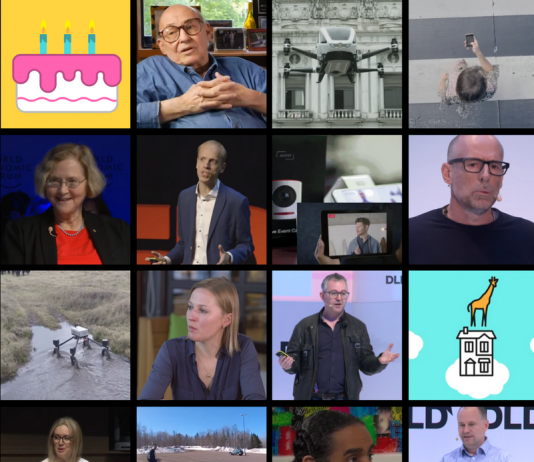
In June, The Innovation Station celebrated her second birthday! We’ve collected 2000 quality innovation videos in only two years. Quite a feat. So, time for a new TIS Picks! But this time, you have chosen the videos. Not us. In this collection you will find the 15 videos that were most popular on our social media accounts during the last two years.
#15: Is Singularity near? (theme: Robots & AI)
Ray Kurzweil is the author of the book The Singularity is Near, which discusses the profound social and philosophical ramifications of increased intelligence, material progress and longevity. Here he interviews late professor Marvin Minsky about artificial intelligence.
Just watched TIS.tv: Kurzweil Interviews Minsky: Is Singularity Near?
According to Johan Schaap ‟Ray Kurzweil interviewing Prof. Marvin Minsky about (artificial) intelligence”www.tis.tv
#14: The Uber for helicopters (theme: Drones)
The Chinese drone company EHANG has introduced the 184, an autonomous flying drone that can transport people. The self-driving (flying!) drone has a single seat and flies with 1.000 horsepower!
Just watched TIS.tv: EHANG 184 Launch Video from CES2016
According to Johan Schaap ‟The EHANG 184 is an autonomous flying drone that can transport people. “www.tis.tv
#13: The power of privacy (theme: Unsorted)
In this short documentary, winner of the British Animation Awards 2016, Aleks Krotoski explores the challenges of digital life in the 21st century: stalking, hacking, leaked documents, open data and continuous monitoring.
Just watched TIS.tv: The Power of Privacy – documentary film
According to Erwin Blom ‟Aleks Krotoski travels the world to undergo challenges that explore our digital life in the…www.tis.tv
#12: World Economic Forum on living to a 100+ (theme: Unsorted)
This World Economic Forum discussion, organized in partnership with TIME, revolves around the question: ‘What if you’re still alive in 2100?’. What indeed will be the impact on life, love and work if you could live to 150 (or forever)?
Just watched TIS.tv: Davos 2016 – What If You Are Still Alive in 2100?
According to Erwin Blom ‟Interesting stuff. And not unrealistic. “www.tis.tv
#11: What if we helped refugees to help themselves? (theme: Refugees)
Professor Refugee and Forced Migration Studies at the Oxford University, Alexander Betts, debunks five myths about refugees during TEDxVienna and hopes to shed more light on misconceptions and facts around this issue.
Just watched TIS.tv: What if we helped refugees to help themselves? | Alexander Betts | TEDxVienna
According to Erwin Blom ‟5 myths about refugees. An inspiring talk!”www.tis.tv
#10: Streaming content made easy (theme: Gadgets)
With the MOVI camera from Freefly Systems you get the multi-camera experience with just one camera. The 6 millimeter camera with a 150 degrees lens is aimed at providing quality video content via live streaming. And the best thing is, you can operate it via smartphone.
Just watched TIS.tv: Movi – The Live Event Camera
According to Elena L. ‟Wow! The feeling of multicamera with only one camera, it’s possible and coming near you soon!”www.tis.tv
#9: Marketing strategies of the great (theme: Disruptors)
Professor in Marketing & Branding Strategies at the NYU School of Business, Scott Galloway, discusses the Big Four (Google, Facebook, Apple, Amazon), their victims and their billion dollar marketing strategies.
Just watched TIS.tv: Gang of Four: Apple / Amazon / Facebook / Google (Scott Galloway, Founder of…
According to Erwin Blom ‟Must see! “It’s never been easier to be a billionaire, but it’s never harder to be a…www.tis.tv
#8: Herding cowboy robot (theme: Robots & AI)
This so-called Swagbot from the University of Sydney is a robotic cowboy that actually herds cattle! The battery-operated robot can even operate in rugged terrain and move as fast as 20 kilometers per hour on smooth terrain. The team is now researching monitoring services for the robot, to detect health issues in cattle or detect good pasture.
Just watched TIS.tv: SwagBot: Australia develops cattle-herding robots that may replace farmers …
According to Simone de Bruin ‟I don’t know what’s cooler: the name Swagbot or the fact that it herds cattle like a…www.tis.tv
#7: Importance of design for Airbnb (theme: Sharing Economy)
The team from High Resolution interviews Katie Dill (Director of Experience Design, Airbnb) about the importance of design for Airbnb. Design is not just about how it looks, but also about how it works, both in the workplace and on the screen.
Just watched TIS.tv: #1: Airbnb’s Director of Experience, Katie Dill, tells us why Airbnb uses
According to Erwin Blom ‟Design is a way to solve problems. Interesting video series! “www.tis.tv
#6: Digitalization & Refugees (theme: Refugees)
In this 2016 DLD Conference talk, Techcrunch editor Mike Butcher explains his Techfugees initiative. He is joined by IT expert Anke Domscheit-Berg, social entrepreneur Paula Schwarz and founder of ReDiSchool Anne Kjaer Riechert to discuss global interconnectivity as a tool for refugees.
Just watched TIS.tv: How Digitalization Helps Refugees
According to Johan Schaap ‟Techcrunch editor Mike Butcher talks about his Techfugees initiative at the DLD 2016…www.tis.tv
#5: Doodling with machine learning (theme: Robots & AI)
AutoDraw by Google helps turn your doodles into recognizable images with machine learning. You simply draw some easy lines and the artificial intelligence immediately starts matching your doodle with free professional images (animations) from artists.
Just watched TIS.tv: AutoDraw: Fast Drawing for Everyone
According to Simone de Bruin ‟This is something you have to try immediately: AutoDraw by Google helps turn your doodles…www.tis.tv
#4: Blockchain protection of intellectual property (theme: Blockchain)
Masha McConaghy explains the idea behind the Berlin-based startup Ascribe.io. The software provides a Blockchain-based service which helps artists to prove origin, manage and protect intellectual property rights to their digital art.
Just watched TIS.tv: Masha McConaghy, Ascribe | Dutch Blockchain Conference #dbc16
According to Mira Suleimenova ‟Ascribe.io is a Berlin based startup helping artists to prove origin, manage and protect…www.tis.tv
#3: Robot falconry (theme: Drones)
This drone catching system by the Human-Interactive Robotics Lab (HIRoLab) at the University of Michigan is referred to as ‘robotic falconry’. The prototype is able to intercept and physically remove intruding drones from designated areas.
Just watched TIS.tv: Robotic Falconry – Drone Catcher System for Removing the Intruding Drones
According to Erwin Blom ‟Cath the drones of the enemy! “www.tis.tv
#2: Tackling climate change (theme: Energy)
Energy expert and author Ramez Naam sat down for an interview with Fast Moving Targets during the 2016 Singularity University The Netherlands Summit. He discusses climate change with Johan Schaap (FMT) and several sustainable energy solutions.
Just watched TIS.tv: Ramez Naam: “We’re in a race against climate change”
According to Simone de Bruin ‟At Singularity University NL Summit we talked with Ramez Naam, researcher and author in…www.tis.tv
#1: The future of work (theme: Finance)
Venture capitalist Albert Wenger discusses the future of work with Dominik Wichmann during 2016 DLD Conference. It’s interesting to see why he, being a VC, believes in a basic income. A system which according to him is going to be affordable.
Just watched TIS.tv: 10 Things You’ve Always Wanted to Know About the Future of Work (Albert Wenger…
According to Erwin Blom ‟It’s interesting to see a VC believing in basic income.”www.tis.tv
This is the end of our #TISis2 list. It was awesome sharing this with you, fans of innovation. In the coming year we’ll keep working on our website and share even more videos, innovative projects and cool stuff! Keep posted on the latest developments and sign up for our weekly newsletter.
The post TIS Picks: The 15 Most Talked-About Videos Of The Last Two Years appeared first on Seats2meet.
September 20, 2017
Round table: “ICT, open societies and new institutions”
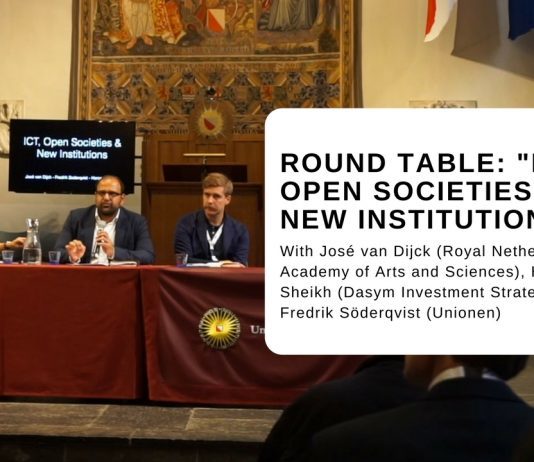
At the World Interdisciplinary Network for Institutional Research (WINIR) conference the roundtable “ICT, open societies and new institutions” was organised.
In this roundtable the question ‘are platforms a new type of institution’ was raised by 3 experts in the field. We recorded the session and shared it on YouTube and Soundcloud. In this blog you can see all 3 contributions and the integral recording of the session, including the discussion between the panelists and the Q&A with the audience.
José van Dijck (Royal Netherlands Academy of Arts and Sciences) raised the question and context on ‘Do platforms bypass of replace institutions?’
Podcast version available:
Fredrik Söderqvist (Unionen) shared some highly interesting thoughts on ‘How to unite unions, platforms and government through algorithms?’
Podcast version available:
Haroon Sheikh (Dasym Investment Strategies) shared a global perspective on the organisation and control of the platform society.
Podcast version available:
After the 3 presentations there was a discussion between the panelists and the audience. You can check the full session in the video below.
Podcast version available:
The post Round table: “ICT, open societies and new institutions” appeared first on Seats2meet.
Zapier is looking for a Product Manager
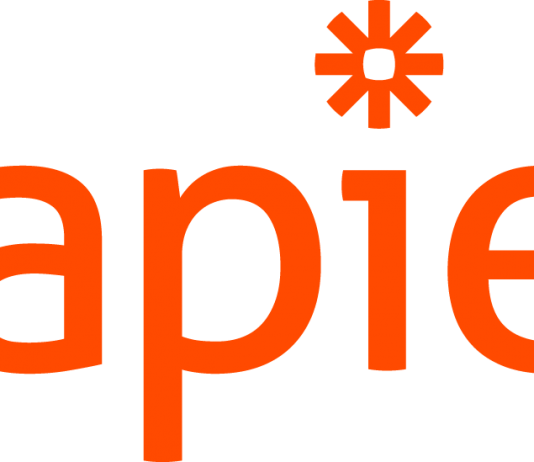
Opportunity originally published on We Work Remotely
Hi there! We’re looking for a Product Manager to lead a new product team within the Zapier marketing department. Our top of funnel growth is propelled in part by SEO, content marketing, and partnerships, bringing us to our more than 1.5 million users. Interested in helping build out our marketing engine to bring the 100+ million professionals to discover the power of automation? Then read on…
We’re a widespread remote team of 100 people, located in thirteen countries, that think computers should do more work. For the past five years, Zapier has been helping people across the world automate the boring and tedious parts of their job. We do that by helping everyone connect the web applications they already use and love.
We get together 2-3 times per year for a company retreat and benefits include great healthcare, dental and vision coverage, 401k retirement plan with company match, profit sharing and 14 weeks paid leave for new parents.
To be considered for this role, please complete the application on Jobs @ Zapier
We’re not accepting applications from agencies.
You can apply for this vacancy here
The post Zapier is looking for a Product Manager appeared first on Seats2meet.
This map shares worldwide airports’ wifi passwords, and we all need it
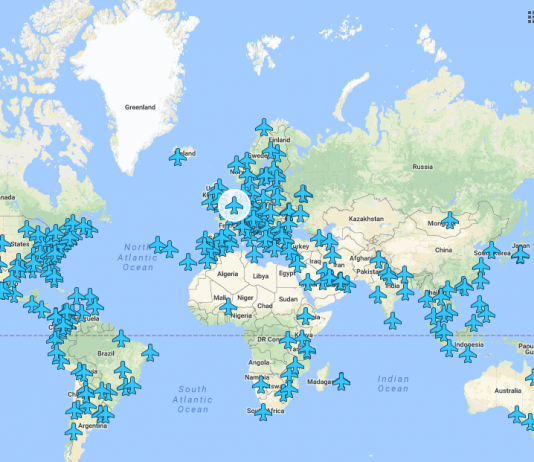
So apparently I am not the only one on the planet who, when gets to a new destination, the first thing I do is try to find the airport Wifi. After all, connectivity can be a matter of safety, especially when you are in a completely new place in which you don’t speak the language, don’t know where to go and how things work. In those cases, the internet can be a true lifesaver. Not only for basic needs but also more and more of us work with internet and travel for work.
It’s not a surprise that a map with all the passwords from airports worldwide would become viral. And by going viral, the map became better, as anyone can contribute to it. The opensource element allowed for it to gather passwords from 269 airports covering a good part of the world. Another element that makes it so special is that it is easy and downloadable as a google doc, so you don’t need internet to see the password in first place. You can access and contribute to the map here.
The post This map shares worldwide airports’ wifi passwords, and we all need it appeared first on Seats2meet.
September 19, 2017
More About: Drones
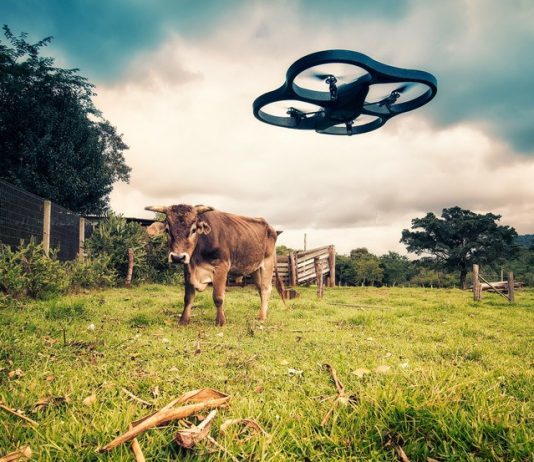
Is It A Bird? Is It A Plane? No, It’s Just A Drone!
A drone or UAV (Unmanned Aerial Vehicle) is a flying vehicle without a human pilot on board. They are controlled remotely, by a person or computer nearby or thousands of kilometers away from the drone. While some drones are just bought for fun of steering an aerial vehicle, others are programmed for certain tasks and fly autonomously. Take for example military drones that are intended to take out other flying targets. In general, most ‘work’ drones are preferred for missions and tasks that are too dull, dirty or dangerous for humans.
Drones programmed for (military) missions are not ‘new’, belonging to only this century, as the story of military drones or unmanned combat aerial vehicles (UCAV) started well before manned flight. Think of the Austrian army attack on Venice in 1849 or the Japanese attacks on US targets during World War II in which balloons were used. Military leaders have always dreamed of reaching their enemies from distance, avoiding human casualties. So it’s not strange to see that the US military sector was leading in these types of engagements with the aerial military surveillance.
The first unmanned jets came into use after World War II, in early 1951, called the Ryan Firebee. Since then, the number of military drones has increased significantly and it has been described as the new paradigm for warfare.
While drones used to be expensive and therefore restricted to use by governmental organizations, the decrease in costs and weight in among other cameras, data storage systems, sensors, GPS through the mass production of mobile phones has led to great popularity for the drones among hobbyists.
What kind of materials / features does a drone have?
On the outside, the drone’s frame often consists of glass fiber tissue with carbon, aluminum, metal foam or biological materials such as mycelium. On the inside, the drone often is a framework of hardware- and software components that varies per drones to optimize it for its task. It’s often equipped with radio graphic control with video via wifi, radio frequencies or a satellite by which the video camera images can followed on the ground.
These are several types of drones, divided by:
Numbers of wings: bi-copter (2), tri-copter (3), quadcopter (5), hexacopter (6), octocopter (8)
Wings flexibility: fixed wings, flexible wings
Purpose: military, civil, public services, hobby
Legislation
Although drones are mostly harmless and designed to help humanity, there are some downsides to drones. Flying them into the city, can cause distortion of wireless communication between other devices and onboard drone cameras lead to privacy concerns. One of the reason, the United States AeroSpace Association has called for all stakeholders to design a law in which personal privacy, transparency and employment are added. Especially since the US expects to have 10.000 flying commercial drones by 2017. At the same time, European governments are focusing on banning drones from airports.
Application of drones
Military: drones are practically invisible at a height of 300 meters and you cannot hear them, so they are of great value to special forces team in reconnaissance missions. Equipped with a ARGUS-IS-camera a HD live stream can be created of 55 square kilometers, a system which can follow individuals on the ground. Night vision equipment such as an infrared camera makes drones very useful for night missions as well. There are also armed drones known as Unmanned Combat Aerial Vehicle (UCAV) which can attack ground and aerial targets and were employed during the war in Iraq and Afghanistan. Obviously, there are many benefits to using drones over soldiers, as they are cheaper, don’t need training, and only suffer from material damage. However, armed drones have been a topic for discussion for many people’s rights associations, since drones have been known to kill civilian causalities in the lines of war.
Civil: the civil applications for drones are endless, just think of aerial photos of crops, camera angles in the movie industry, aerial photography, tracking the road network, search and rescue operations, searching of radioactive sources, the inspection of high voltage installations, climate research around volcanoes, inspection of buildings, the protection of wild animals and the delivery of food and medicine to remote areas.
Public services: the employment of drones can be useful to help with hostage situations, tracking of criminals, rescue operations and fire control. Think of a situation in which an emergency medical drone can quickly be deployed to deliver medication, a defibrillator or reanimation tools.
Hobby: as drones are getting cheaper, many drones are more and more used for leisure activities. From flying a drone in your own garden, to a world championship in drone racing.
And for the people that don’t like drones?
There are methods and equipment that will prevent drones from entering a certain airspace or completing his mission:
In 2013 Samy Kamkar demonstrated a hostile takeover by attacking the open wireless connection from the drone.
China and the USA are working on a laser strike for drones which could attack drones up to 500 meters in the air and up to a speed of 180 km/h.
A frequency jammer can be used to jam the radio signal between the ground control and the control or video of the drone, but they are prohibited in many countries. However, when the signal drops out, most drones are programmed to fly back to the starting point based on GPS.
Watch more videos on Drones .
The post More About: Drones appeared first on Seats2meet.
Seats2meet Amersfoort middelpunt van de wereld!
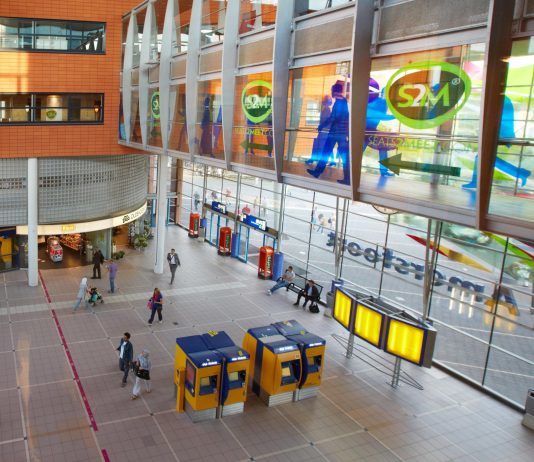
Seats2meet-locaties bieden innovatieve werkplekken waar we bezoekers spontaan en onverwacht verbinden met de juiste mensen. Serendipiteit (het faciliteren van spontane onverwachte ontmoetingen) is waar het ons allemaal om draait!
NIEUW
De afgelopen jaren ontwikkelde Seats2meet international de app The Serendipity Machine: een app die helpt om mensen in het netwerk real-time én place-based te koppelen aan elkaar. Niet alleen op locatie dus, maar The Serendipity Machine verbindt je op basis van skills en huidige activiteiten aan mensen wereldwijd die ook zijn ingecheckt en dus open staan voor nieuwe verbindingen!
Vlak voor de zomer werd de allernieuwste versie gelanceerd van de app (Android en IOS) waar we mega enthousiast over zijn. Met deze super krachtige tool is het nog makkelijker je sociaal kapitaal (kennis en netwerk) te delen én dus de manier om sneller aan relevante verbindingen te komen. En dat is waar we in geloven: verbindingen maken, kennis en netwerken delen en elkaar helpen om verder te komen!
Fantastische resultaten
En dat is niet alleen geloven maar ook weten. De Erasmus Universiteit doet al jaren onderzoek naar het effect van serendipiteit op al onze Seats2meet-locaties. Uit onderzoek in 2015 blijkt dat 1 op de 6 bezoekers van Seats2meet.com een nieuwe baan, betaalde opdracht vindt of zelfs een nieuw bedrijf start. Een fantastisch resultaat, waarmee we volgens ons het UWV overtreffen qua resultaten op het gebied van werkgelegenheid creatie!
Connected to a worldwide network!
En dat resultaat kan alleen maar groeien! Nu we ons netwerk ook kunnen verbinden aan mensen die zich buiten onze S2M-locaties bevinden, kan het niet anders dan dat er met The Serendipity Machine nog veel meer banen, klussen gevonden worden én bedrijven gestart. Inmiddels zijn er wereldwijd al 220 Serendipity Spots in 23 landen met een potentie van 4,1 miljoen connecties! Seats2meet Amersfoort CS is hiermee niet langer het middelpunt van Nederland maar van de wereld!
Terug naar jou…. een kwestie van doen!
Wat betekent dit alles voor jou? Als je voortaan bij ons (of een andere Seats2meet-locatie) incheckt voor een werkplek, ben je direct ook ingecheckt op The Serendipity Machine en kun je via de app (die je zowel via IOS en Android kunt downloaden) gebruikmaken van deze locatie-overschrijdende matchingstool en verbind je je dus met een wereldwijd netwerk! Mogelijkheden die de app biedt zijn de automatische match die de app voor je maakt op basis van ‘skills’ en ‘what you are working on’? Verder kun je zelf actief zoeken op ‘skills’ van andere mensen, kun je zelf actief connectie-verzoeken versturen, contacten opslaan en bieden we ‘icebreakers’ om makkelijker contact te maken. Het werkt simpel, het is een kwestie van doen!
Terug naar onze ambitie in Amersfoort
We zien een trend. Bedrijven, horeca, scholen, bibliotheken en ziekenhuizen openen hun deuren voor de wereld. Gasten zijn welkom in de centrale ruimtes om daar te werken en elkaar te ontmoeten. De app The Serendipity Machine is de tool voor deze plekken om ook een ‘serendipity spot’ te worden. Mensen kunnen de locatie vinden als een place-to-be en de locatie heeft direct een dashboard om te kijken welke mensen (en skills) er in huis zijn! Zeer waardevol, want met mensen die je plek binnenkomen, komt er ook veel expertise en kennis binnen. Wij helpen locaties in Amersfoort (in de breedste zin van het woord) daarom graag om ook een Serendipity Spot te worden en ook een plaats te worden vol mogelijkheden! Interesse? Neem contact met ons op!
Get out of your bubble en connect to a worldwide network!
The post Seats2meet Amersfoort middelpunt van de wereld! appeared first on Seats2meet.
September 18, 2017
Culinaire fotografie in opdracht

Article originally published in MyLucie.com
Onlangs heb ik voor Seats2meet in Utrecht CS een food fotografie opdracht mogen doen. Seats2meet zit op verschillende plekken in het land. Bij hen kun je terecht voor een locatie voor vergadering, meetings en bijeenkomsten. Ook is het een werkplek voor freelancers en zijn er verschillende mogelijkheden om te netwerken.
Voor de locatie in Utrecht CS was de opdracht de kaart van de catering voor de website opnieuw te fotograferen.
In samenwerking met de chef kok Inge van deze locatie heb ik deze food foto’s gemaakt. Ik heb bij hen de foto’s gemaakt.

Van tevoren hadden we al bepaald welke ondergrond ik ging gebruiken. Dit is een vinyl achtergrond met een foto van een witte houten tafel erop. Makkelijk mee te nemen en het is stevig materiaal. Deze bestelde ik bij Capture by Lucy,die ik via Instagram leerde kennen.

Ja, ja working like a real pro! Inge en ik wilden iets moois maken van de soep voor de foto van het lunchbuffet. Met een injectienaald met room hebben we een mooi kringetje erin gemaakt. Hierbij moet je daarna snel werken want de room loopt uit. Dus alles van tevoren klaar zetten en dan als laatste de room erin spuiten.

 De foto’s moesten een beetje eenvoudig blijven omdat de foto’s op de website vrij klein zijn. Dus als er dan teveel te zien is (te druk voor je oog) dan komt het niet goed over. Af en toe ging ik “freestylen” zoals Inge het noemde, ging ik toch even kruimels neerleggen, een hapje ergens uit nemen voor de levendigheid van de foto.
De foto’s moesten een beetje eenvoudig blijven omdat de foto’s op de website vrij klein zijn. Dus als er dan teveel te zien is (te druk voor je oog) dan komt het niet goed over. Af en toe ging ik “freestylen” zoals Inge het noemde, ging ik toch even kruimels neerleggen, een hapje ergens uit nemen voor de levendigheid van de foto.
 Ik mocht gebruik maken van het servies van Seats2meet, die vooral mooie borden en houten planken hadden. Zelf had ik ook wat fotoprops meegenomen zoals bestek, kleine schaaltjes en bakjes.
Ik mocht gebruik maken van het servies van Seats2meet, die vooral mooie borden en houten planken hadden. Zelf had ik ook wat fotoprops meegenomen zoals bestek, kleine schaaltjes en bakjes.
Inge had van tevoren alles perfect voorbereid. Alle gerechten stonden al klaar en waren gemaakt. Als iets opgewarmd moest worden deed het keukenteam dit. Daardoor konden we goed doorwerken en ging de samenwerking gesmeerd.


Lees hier de recensie van Seats2meet: werk food foto’s en styling
The post Culinaire fotografie in opdracht appeared first on Seats2meet.
November 22: Nationale Werkbezoekdag
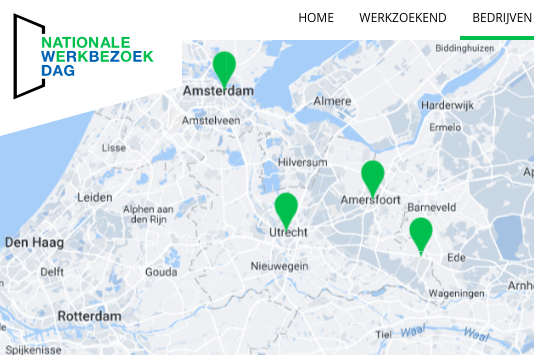
November 22 is Nationale Werkbezoekdag (“National Company Visit Day”). Companies – and independent freelancers – all over The Netherlands invite job seekers to visit their workplace. Via a special website job seekers can indicate which companies they would like to visit. During the day the jobseekers talk with HR-managers, get a tour in the company and thereby jobseekers gain insight in the working field of the company.
Do you like to participate in Nationale Werkbezoekdag on November 22? Are you a freelancer and enthusiastic about your work? Check www.werkbezoekdag.nl or use the Twitter-hashtag #werkbezoekdag.
Nationale Werkbezoekdag is organized by DeBroekriem, a peer-2-peer platform for people in-between-jobs. This platform motivates job seekers by facilitating inspiring daily activities where jobseekers learn and improve their job application skills and meet new people.
More information: www.werkbezoekdag.nl
The post November 22: Nationale Werkbezoekdag appeared first on Seats2meet.
Vakbonden en platformen: onmogelijke combi of droomhuwelijk? | Data minen bij chauffeurs | Platformen en belasting
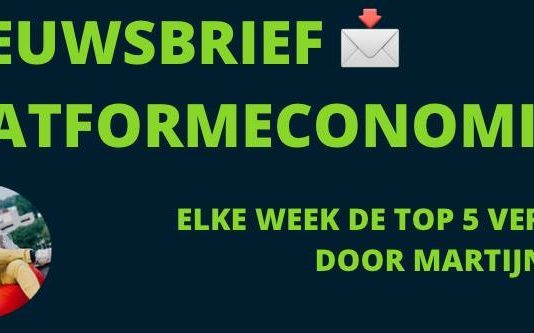
Deze week waren platformen volop in de mainstream media te vinden. Met de vraag of platformen belasting moeten betalen op de plek waar de waarde wordt gecreëerd én over de meest gangbare vraagstukken rondom arbeid via platformen. Is een platform nu werkgever of niet? En hoe kunnen ‘workers’ zich organiseren via een vakbond wanneer zij voor een platform werken? Beide vragen kwamen aan bod tijdens mijn bijdragen op BNR Nieuwsradio, een sessie bij het Ministerie van Financiën en een mooi event over platformen en werk in Pakhuis de Zwijger (zie video, mijn inleiding begint op 07:05). Deze week deze onderwerpen en meer in de 5 bijdragen die ik voor je selecteerde en van mijn mening en duiding voorzag. Mooie week!
Platformeconomie top 5
Zweedse vakbond omarmt platforms als Deliveroo | Het Financieele Dagblad
Deze week was er flink wat aandacht in de media voor de opstand van de Deliveroo koeriers naar aanleiding van het bericht dat Deliveroo de bezorgers niet via een nul uren contract maar als ZZP’er in wil gaan huren.
Hoewel het normaal voor platform workers lastig is om zich te verenigen, veel platformen doen er veel aan zodat zij niet weten wie de collega’s zijn, hadden de riders van Deliveroo wel een manier gevonden om elkaar te vinden. (noot: in de oorspronkelijke editie van deze nieuwsbrief stond dat de groepen van Telegram openbaar waren, dit was niet het geval). Toen Deliveroo de koeriers het ZZP-schap door de strot duwde, was het voor de koeriers eenvoudig om zich te organiseren in de ‘Riders Union‘. De aansluiting met de FNV en enkele politici van o.a. PvdA was snel gemaakt en zo hadden de koeriers opeens wél een stem. In de foto onder aan dit stuk zie je de groep riders die bij de eerste bijeenkomst waar ik aanwezig was aanwezig waren.
Er wordt nog weinig gesproken over de rol van vakbonden in de klusjeseconomie, laat staan op een vooruitstrevende manier hoe de platformgedachte en algoritmes te integreren met vakbonden. Deze week was Fredrik Söderqvist van de Zweedse vakbond Unionen in Nederland. Hij geeft in dit interessante artikel een inkijkje over hoe vakbonden en platformen elkaar kunnen versterken. Met de nodige inspirerende food4thought.
Meer weten over de visie van Fredrik? Bekijk dan de video van het event ‘Werken in de platformeconomie’ vanaf 23:50. Volgende week zal ik een video delen waarin hij deelneemt in een panel gesprek op het ‘World Interdisciplinary Network for Institutional Research’ (WINIR) congres waar ik deze week ook (met camera) aanwezig was. Absoluut de moeite van het terugkijken waard.

Financiën kijkt naar belasting 'leeneconomie' | Financieel Dagblad
Afgelopen donderdag kwam er een onduidelijk bericht uit dat met de kabinetsformatie met spoed moest worden uitgezocht hoe platformen beter te gaan belasten. In het begin werd er veel naar platformen als Airbnb gewezen. Dat was bijzonder, omdat belasting rondom Airbnb in principe prima is geregeld: Airbnb regelt in veel gevallen de betaling van toeristenbelasting, over de commissie van Airbnb wordt netjes lokaal BTW afgedragen en de hosts zijn zelf verantwoordelijk voor het aangeven van hun Airbnb inkomsten bij hun belasting opgave. Hoewel er nog veel vraagtekens staan bij de variabele of mensen die doen, valt er op de wet zelf weinig aan te merken.
Een interessante passage in dit artikel: “De vraag of consumenten die platforms als Facebook of Google betalen met het kijken naar advertenties of hun gegevens geen omzet vertegenwoordigen, vindt hij wel ‘zinvol’”. Oftewel: we betalen met onze data en aandacht en moeten we niet eens kijken of hier iets met belasting moet worden gedaan?
Later bleek dat dit bericht volgde op een stuk in de Financial Times een paar dagen daarvoor waarin Frankrijk en Duitsland een vergelijkbaar voorstel deden. Het gaat nu dus niet zozeer over belasting op Uber en Airbnb of op data, maar of grote tech platformen bijvoorbeeld de advertentie inkomsten kunnen gaan belasten (ook winstbelasting) in het land waar deze worden verkocht / getoond. Zie ook dit recente stuk op Nu.nl.
Al met al is het duidelijk dat de belastingdienst steeds meer en concreter nadenkt over hoe dit soort tech bedrijven te belasten.
Opmerkelijk: het stuk in het FD werd oorspronkelijk gesproken over de ‘leeneconomie’, een paar dagen later was de kop aangepast in ‘platformeconomie’. Mooi om te zien dat de term platformeconomie steeds breder wordt ingezet…
Gevaren Airbnb onderschat | De Telegraaf
Het is natuurlijk goed om mensen te wijzen op het risico dat verhuur via een platform als Airbnb met zich meebrengt. Zo kan het zijn dat je verzekering schade niet dekt, de bank officieel niet toestaat dat je je woning (tijdelijk) onderverhuurt en je VvE kan de verhuur ook verbieden.
Wat dan weer naïef is, is de waarschuwing dat je de kans loopt op een boete wanneer je je huis buiten de regels om verhuurd en wanneer de belastingdienst er achter komt dat je de inkomsten niet hebt opgegeven bij je aangifte. Op het moment dat je +10K verdient met het verhuren van je huis, lijkt het mij een bewuste keuze om dit wel of niet te doen, met de risico’s van dien…
Thanks to a dashcam, crafty Uber drivers are boosting their pay | CNN
In het kader van beter benutten van capaciteit is dit een interessante:
“Drivers are starting to place cameras behind their windshields to record the road ahead of them. Startups chasing the gold mine of car data are paying them to install these cameras. The startups want these videos to do everything from build maps for self-driving cars to track pedestrian activity.”
Het plaatsen van een camera of sensoren op een taxivloot is een heel interessante (even los van mogelijk discutabele) manier om snel veel data te verzamelen. Aan de andere kant is het voor de chauffeurs naast een leuk extra zakcentje, ook een manier om er voor te zorgen dat bijvoorbeeld Uber of Lyft geen data monopolie krijgen.
“In three months, they’ve mapped over 500,000 miles of U.S. roads with 2,000 drivers using their iPhone app, Payver. Drivers receive between two and five cents per mile. Lvl5 expects that with 50,000 U.S. drivers, it can gather enough data to build maps for self-driving cars.”
Dit soort praktijken is eerder ook al gebruikt om een nieuwe concurrent een voorsprong te geven. Zoals bij Uber concurrent Juno in New York in dit stuk van Forbes:
“The startup isn’t letting riders find drivers just yet. Instead, Juno is paying some Uber drivers $25 per week to join and drive their normal routes while keeping the Juno app on as well.
Marco (founder – MA) calls the data-gathering practice “beta testing” for Juno. “Making sure that everything works—at scale,” he says. “In addition, this gives us the opportunity to understand patterns, traffic behavior, activity hours and so on.””
Slim.
SnappCar neemt Duits autodeelplatform tamyca over – Deeleconomie in Nederland
Als je als platform wilt groeien dan kun je twee dingen doen: zelf doen of een bestaande speler opkopen. Als je in een nieuw land begint waar al een aantal sterke partijen actief zijn is de laatste optie veelal de enige juiste keuze. SnappCar heeft dit ook gezien en nam afgelopen week een Duits autodeelplatform over.
Spijtig voor SnappCar ontving de Amerikaanse concurrent Turo (voorheen Relay Rides, zie hier een interview dat ik deed in San Francisco in 2014) in diezelfde week een investering van 92 miljoen dollar van een investeringsgroep geleid door Mercedes om…. de Duitse markt in te gaan. Turo integreert het Duitse deelplatform Croove in haar systeem (welke eerst in handen was van Mercedes) om ook daar een vliegende start te kunnen maken.
Ik ben benieuwd wie er als winnaar uit de bus komt, maar dat er nu gas wordt gegeven in de peer2peer auto deel markt dat is duidelijk. (p.s.: een platform overnemen is 1, maar er voor zorgen dat de integratie – ook met het personeel en cultuur – goed verloopt is een ander verhaal).
In de media
Wordt de deeleconomie straks ook belast? | BNR Nieuwsradio
Donderdag was ik om 06:00uur ‘s ochtends telefonisch te gast in de uitzending van BNR Nieuwsradio over de geruchten dat er wordt gezocht naar een manier om de deeleconomie te kunnen belasten. In het tweede artikel van deze editie heb je hier meer over kunnen lezen.
Contact
Advies of duiding nodig of op zoek naar een spreker? Neem gerust contact op via mail (martijn@deeleconomieinnederland.nl) of telefoon (06-50244596)
The post Vakbonden en platformen: onmogelijke combi of droomhuwelijk? | Data minen bij chauffeurs | Platformen en belasting appeared first on Seats2meet.
September 17, 2017
Vakbonden en platformen: onmogelijke combi of droomhuwelijk? | Data minen bij chauffeurs | Platformen en belasting

Deze week waren platformen volop in de mainstream media te vinden. Met de vraag of platformen belasting moeten betalen op de plek waar de waarde wordt gecreëerd én over de meest gangbare vraagstukken rondom arbeid via platformen. Is een platform nu werkgever of niet? En hoe kunnen ‘workers’ zich organiseren via een vakbond wanneer zij voor een platform werken? Beide vragen kwamen aan bod tijdens mijn bijdragen op BNR Nieuwsradio, een sessie bij het Ministerie van Financiën en een mooi event over platformen en werk in Pakhuis de Zwijger (zie video, mijn inleiding begint op 07:05). Deze week deze onderwerpen en meer in de 5 bijdragen die ik voor je selecteerde en van mijn mening en duiding voorzag. Mooie week!
Platformeconomie top 5
Zweedse vakbond omarmt platforms als Deliveroo | Het Financieele Dagblad
Deze week was er flink wat aandacht in de media voor de opstand van de Deliveroo koeriers naar aanleiding van het bericht dat Deliveroo de bezorgers niet via een nul uren contract maar als ZZP’er in wil gaan huren.
Hoewel het normaal voor platform workers lastig is om zich te verenigen, veel platformen doen er veel aan zodat zij niet weten wie de collega’s zijn, had Deliveroo de ‘fout’ gemaakt om gebruik te maken van Telegram (= Whatsapp alternatief) groepen om met de koeriers te communiceren. Met als gevolg dat de gegevens van de collega’s bij alle koeriers bekend waren, wat weer leidde tot niet officiële communicatie groepen. Lang verhaal kort gemaakt: toen Deliveroo de koeriers het ZZP-schap door de strot duwde, was het voor de koeriers eenvoudig om zich te organiseren in de ‘Riders Union‘. De aansluiting met de FNV en enkele politici van o.a. PvdA was snel gemaakt en zo hadden de koeriers opeens wél een stem. In de foto onder aan dit stuk zie je de groep riders die bij de eerste bijeenkomst waar ik aanwezig was aanwezig waren.
Er wordt nog weinig gesproken over de rol van vakbonden in de klusjeseconomie, laat staan op een vooruitstrevende manier hoe de platformgedachte en algoritmes te integreren met vakbonden. Deze week was Fredrik Söderqvist van de Zweedse vakbond Unionen in Nederland. Hij geeft in dit interessante artikel een inkijkje over hoe vakbonden en platformen elkaar kunnen versterken. Met de nodige inspirerende food4thought.
Meer weten over de visie van Fredrik? Bekijk dan de video van het event ‘Werken in de platformeconomie’ vanaf 23:50. Volgende week zal ik een video delen waarin hij deelneemt in een panel gesprek op het ‘World Interdisciplinary Network for Institutional Research’ (WINIR) congres waar ik deze week ook (met camera) aanwezig was. Absoluut de moeite van het terugkijken waard.

Financiën kijkt naar belasting 'leeneconomie' | Financieel Dagblad
Afgelopen donderdag kwam er een onduidelijk bericht uit dat met de kabinetsformatie met spoed moest worden uitgezocht hoe platformen beter te gaan belasten. In het begin werd er veel naar platformen als Airbnb gewezen. Dat was bijzonder, omdat belasting rondom Airbnb in principe prima is geregeld: Airbnb regelt in veel gevallen de betaling van toeristenbelasting, over de commissie van Airbnb wordt netjes lokaal BTW afgedragen en de hosts zijn zelf verantwoordelijk voor het aangeven van hun Airbnb inkomsten bij hun belasting opgave. Hoewel er nog veel vraagtekens staan bij de variabele of mensen die doen, valt er op de wet zelf weinig aan te merken.
Een interessante passage in dit artikel: “De vraag of consumenten die platforms als Facebook of Google betalen met het kijken naar advertenties of hun gegevens geen omzet vertegenwoordigen, vindt hij wel ‘zinvol’”. Oftewel: we betalen met onze data en aandacht en moeten we niet eens kijken of hier iets met belasting moet worden gedaan?
Later bleek dat dit bericht volgde op een stuk in de Financial Times een paar dagen daarvoor waarin Frankrijk en Duitsland een vergelijkbaar voorstel deden. Het gaat nu dus niet zozeer over belasting op Uber en Airbnb of op data, maar of grote tech platformen bijvoorbeeld de advertentie inkomsten kunnen gaan belasten (ook winstbelasting) in het land waar deze worden verkocht / getoond. Zie ook dit recente stuk op Nu.nl.
Al met al is het duidelijk dat de belastingdienst steeds meer en concreter nadenkt over hoe dit soort tech bedrijven te belasten.
Opmerkelijk: het stuk in het FD werd oorspronkelijk gesproken over de ‘leeneconomie’, een paar dagen later was de kop aangepast in ‘platformeconomie’. Mooi om te zien dat de term platformeconomie steeds breder wordt ingezet…
Gevaren Airbnb onderschat | De Telegraaf
Het is natuurlijk goed om mensen te wijzen op het risico dat verhuur via een platform als Airbnb met zich meebrengt. Zo kan het zijn dat je verzekering schade niet dekt, de bank officieel niet toestaat dat je je woning (tijdelijk) onderverhuurt en je VvE kan de verhuur ook verbieden.
Wat dan weer naïef is, is de waarschuwing dat je de kans loopt op een boete wanneer je je huis buiten de regels om verhuurd en wanneer de belastingdienst er achter komt dat je de inkomsten niet hebt opgegeven bij je aangifte. Op het moment dat je +10K verdient met het verhuren van je huis, lijkt het mij een bewuste keuze om dit wel of niet te doen, met de risico’s van dien…
Thanks to a dashcam, crafty Uber drivers are boosting their pay | CNN
In het kader van beter benutten van capaciteit is dit een interessante:
“Drivers are starting to place cameras behind their windshields to record the road ahead of them. Startups chasing the gold mine of car data are paying them to install these cameras. The startups want these videos to do everything from build maps for self-driving cars to track pedestrian activity.”
Het plaatsen van een camera of sensoren op een taxivloot is een heel interessante (even los van mogelijk discutabele) manier om snel veel data te verzamelen. Aan de andere kant is het voor de chauffeurs naast een leuk extra zakcentje, ook een manier om er voor te zorgen dat bijvoorbeeld Uber of Lyft geen data monopolie krijgen.
“In three months, they’ve mapped over 500,000 miles of U.S. roads with 2,000 drivers using their iPhone app, Payver. Drivers receive between two and five cents per mile. Lvl5 expects that with 50,000 U.S. drivers, it can gather enough data to build maps for self-driving cars.”
Dit soort praktijken is eerder ook al gebruikt om een nieuwe concurrent een voorsprong te geven. Zoals bij Uber concurrent Juno in New York in dit stuk van Forbes:
“The startup isn’t letting riders find drivers just yet. Instead, Juno is paying some Uber drivers $25 per week to join and drive their normal routes while keeping the Juno app on as well.
Marco (founder – MA) calls the data-gathering practice “beta testing” for Juno. “Making sure that everything works—at scale,” he says. “In addition, this gives us the opportunity to understand patterns, traffic behavior, activity hours and so on.””
Slim.
SnappCar neemt Duits autodeelplatform tamyca over – Deeleconomie in Nederland
Als je als platform wilt groeien dan kun je twee dingen doen: zelf doen of een bestaande speler opkopen. Als je in een nieuw land begint waar al een aantal sterke partijen actief zijn is de laatste optie veelal de enige juiste keuze. SnappCar heeft dit ook gezien en nam afgelopen week een Duits autodeelplatform over.
Spijtig voor SnappCar ontving de Amerikaanse concurrent Turo (voorheen Relay Rides, zie hier een interview dat ik deed in San Francisco in 2014) in diezelfde week een investering van 92 miljoen dollar van een investeringsgroep geleid door Mercedes om…. de Duitse markt in te gaan. Turo integreert het Duitse deelplatform Croove in haar systeem (welke eerst in handen was van Mercedes) om ook daar een vliegende start te kunnen maken.
Ik ben benieuwd wie er als winnaar uit de bus komt, maar dat er nu gas wordt gegeven in de peer2peer auto deel markt dat is duidelijk. (p.s.: een platform overnemen is 1, maar er voor zorgen dat de integratie – ook met het personeel en cultuur – goed verloopt is een ander verhaal).
In de media
Wordt de deeleconomie straks ook belast? | BNR Nieuwsradio
Donderdag was ik om 06:00uur ‘s ochtends telefonisch te gast in de uitzending van BNR Nieuwsradio over de geruchten dat er wordt gezocht naar een manier om de deeleconomie te kunnen belasten. In het tweede artikel van deze editie heb je hier meer over kunnen lezen.
Contact
Advies of duiding nodig of op zoek naar een spreker? Neem gerust contact op via mail (martijn@deeleconomieinnederland.nl) of telefoon (06-50244596)
The post Vakbonden en platformen: onmogelijke combi of droomhuwelijk? | Data minen bij chauffeurs | Platformen en belasting appeared first on Seats2meet.



